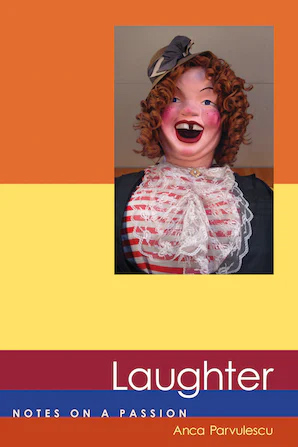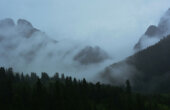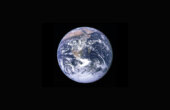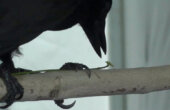The Civilizing of Laughter

The year is 1579. Having kept the manuscript in a drawer for 20 years, Laurent Joubert publishes his “Treatise on Laughter.” His goal: “leave nothing on the unusual topic unsounded.”
The treatise is an early modern encyclopedia of laughing matters. Trained in the tradition of humanist medicine, Joubert begins by sketching a fictitious contest between the parts of the human body. Which one is most important? Which one can stand on its own? One obvious candidate lays its claims to the title: the hand. Joubert acknowledges its merits but soon dismisses it. After all, the brain commands and the hand obeys. The brain takes the lead in the competition but does not reign long. Another contestant appears and wins: the face.

Only man has a face; animals do not. We carry it high, looking toward the sky, proud; the face is the signpost of our verticality. It is the site of social interaction — the face-to-face — and therefore cannot be covered by either hair or clothes. It is the seat of beauty; art is content to represent the face as the mark of an individual. It is the mirror of the soul; passions are visible on the face; so is sickness. The kiss is of the face, and therefore love. The face is individual but the face of Marguerite de Navarre, to whom the Treatise is dedicated, is also, according to Joubert, the face of the French nation. Most of all, however, what makes the face stand out is its status as the throne of laughter, and Joubert agrees with the premise that laughter makes us human; laughter is the “effect of the most human passion there is.” As such, laughter will be paramount in the modern history of the face, which could be said to begin with Joubert’s contest. The face and laughter come to define each other: man is the only animal with a face, which is why he laughs; and man is the only animal who laughs, which is in direct correlation with his face.
What is laughter? Joubert’s catalog of definitions returns us to a materialism long forgotten today. Laughter is “a trembling and a noise”; “a sound producing movement”; “a movement which stretches the muscles of the face”; “the dilating of the parts of the mouth and of the face.” In laughter, “the chest shakes, the lungs produce an interrupted sound, the mouth opens, and the lips draw back.” To the question: What does laughter look like? Joubert gives a complex answer:
Everybody sees clearly that in laughter the face is moving, the mouth widens, the eyes sparkle and tear, the cheeks redden, the breast heaves, the voice becomes interrupted; and when it goes on for a long time the veins in the throat become enlarged, the arms shake, and the legs dance about, the belly pulls in and feels considerable pain; we cough, perspire, piss, and besmirch ourselves by dint of laughing, and sometimes we even faint away because of it. This need not be proven.
Laughter is a convulsion of the face. It involves a specific constellation of functions of the face: the mouth, the eyes, the cheeks, the voice. When laughter becomes a question not of a single burst but of a series of bursts (“when it goes on for a long time”), it also involves the rest of the body — arms, legs, belly, breast, veins in the throat. The body laughs. Extreme physiological changes might occur, for one can feel pain, cough, perspire, piss, besmirch oneself, faint. The body in laughter is a convulsive assemblage, whose parts shake and dance about, refusing to form a totality. The laughing face is itself bursting, its mouth suddenly stretched, its eyes sparkling, color splashing its cheeks with shades of red.
Joubert further complicates the scene of laughter:
Some men, when they laugh, sound like geese hissing, others like grumbling goslings; some recall the sigh of woodland pigeons, or doves in their widowhood; others the hoot-owl; one an Indian rooster, another a peacock; others give out a peep-peep, like chicks; for others it is like horse neighing, or an ass heehawing, or a dog that yaps or is chocking, some people call to mind the sound of dry-axled carts, others, gravel in a pail, others yet a boiling pot of cabbage; and some have still another resonance, aside from the look on their face and the grimacing, so variedly diverse that nothing parallels it.
Not only is laughter distorting the face into a grimace and shaking the body convulsively, but it also produces a certain, hard-to-define, sound. Joubert describes laughter’s sound onomatopoeically; laughter sounds “like” geese hissing, horses neighing, the peep-peep of chicks, or the hee-hawing of asses. Even when laughter sounds like a pot of boiling cabbage or gravel in a pail, the description speaks to the ear of Joubert’s reader; one is challenged to hear these sounds.
The choreography of the body in laughter is, however, only the outward manifestation of a passion. Which passion? The question seems simple, yet it has received a variety of answers, with a number of variables. For particular passions often blend into compounds, and a particular chemistry is needed to produce different compounds. Joubert offers a list: “The principal of these are joy, sorrow, hope, fear, love, hate, anger, pity, shame, impudence, zeal, and envy or malice. They are also called passions, troublings or perturbations of the soul in that they come from an appetite that does not proceed from reason.”
Among the passions on Joubert’s list, it is clear that laughter is a manifestation of joy. But things are not so simple. Like other early modern theorists of passions, Joubert adds that the joy associated with laughter is of a particular quality and is most often accompanied by other passions. For Joubert, laughter translates as a combination of joy and sorrow. The particular constellation of movement and sound we call laughter, that trembling noise and muscular movement, transcribes the workings of a blend of joy and sorrow, expressing, in an Aristotelian vein, “a feeling over an ugly thing unworthy of pity.” Laughter marks the tension between the joy and the sorrow we feel when faced with this ambivalent situation. Passions are located in the heart, which is why we say one laughs “heartily” (il rit de bon cœur), but in Joubert’s account they are, or should be, governed by reason. That the human mind is to be conceived as a commonwealth and the commonwealth as a human mind, Joubert knows from Plato’s “Republic.” The analogy is a commonplace of work on passions in the early modern period. Reason is to be sovereign in both; the prince is to be an embodiment of reason, ruling over the passions of the people. The reverse is also true: Control over the passions yields political power.
Joubert tells us there are two ways to govern: “one is as master, where one simply commands; the other is civil or political, where with authority one points out obligations. Reason governs the heart in the second way when with its advice it moves or calms the emotions, and if the heart resists the bit, reason has recourse to the first means, through which it can order the external members to do its bidding.” In other words, reason first tries to calm the passions, to show them in what direction they ought to move us. If the passions resist the authority of reason, the latter has recourse to another maneuver, directly commanding “the exterior,” the body and the face, to not follow the movement of a given passion. Joubert trusts that things stop here and there is no need for what Erasmus identified as the last resort in government, censorship: Cover the mouth with a napkin or the hand.
It seems, however, that sovereign reason is often at a loss when confronted with laughter:
These are among the great marvels of laughter, how it escapes so quickly that it seems to come without our knowing it, almost sneaking out, and how sometimes, letting ourselves be overcome with laughter, we cannot stop or suppress it. For when we laugh until we split [nous rions à tout rompre], carried away by cachinnation [amportés du Cachin], it is not in our power to close our mouth or to have breath at our bidding, so that with the air lacking, sometimes one almost suffocates.
Laughter seems to obey reason less than any other passion. A rebel, it sneaks in and overpowers reason. We cannot control our laughs, Joubert argues, much as we cannot control our bladder. Laughter “bursts,” “breaks,” and “splits” us.
Not all laughs are the same, and not all pose the same threat to reason and its governance. What is needed is a typology of laughter, instrumental in the acquisition of the “savoir-rire.” There are two basic kinds of laughter. The first is modest; it is small, natural, and healthy. The second and problematic one is cachinnation (le cachin); it is bastard, illegitimate, and unhealthy. Cachinnation is an umbrella term for laughs that are “immodest, excessive, insolent, and too long.” The mouth, which shows a medium opening in modest laughter, is gaping indecently. While modest laughter is the laughter of the Aristotelian definition, cachinnation evades it. In this latter case, the same constellation of movement and sound occurring in modest laughter cannot be traced back to something ugly or inappropriate but unworthy of compassion. The laughter of tickling and infant laughter fall into this category. Something known as “dog laughter” (le ris-chien) belongs here too.
Cachinnation, Joubert argues, borders on madness. It can be caused by castration, poisonous bites, or epilepsy.
Cachinnation, Joubert argues, borders on madness. It can be caused by castration, poisonous bites, or epilepsy. A number of epithets come to define unhealthy, bastard laughter: sardonian, canine, Ajax, Catonian, Ionic, inept, tumultuous, asbestos. Modest, healthy laughter is in no need of epithets, it is simply called laughter. Language has slowly rid itself of most of these epithets, as we have slowly learned to laugh our small, modest laughs, which we, indeed, have come to call “laughter.” The very word “cachinnation,” widely used in the early modern period, slowly fades out of use.
Modest laughter is to be encouraged, because it acquires therapeutic qualities. A long tradition in the history of medicine pursues this idea. Laughter is a remedy for a variety of health problems, heart disease in particular. In fact, to not laugh is worrisome for Joubert. And there are some people who do not laugh: “those who give themselves completely to study and contemplation, or to some great enterprise, are almost all agelasts, sad, rude, severe, and have knitted brows.” It is not difficult to discern the figure of the knit-browed philosopher here. At the other end of the spectrum, children and the young laugh more. So do women. While modest laughter has its clear advantages, cachinnation is dangerous. It renders effeminate. It makes fat. It causes fainting spells, coughing, and strangulation. One can even die laughing.
Anca Parvulescu is professor of English at Washington University in St. Louis. She is the author of, among other books, “Laughter: Notes on a Passion,” from which this article is excerpted.



